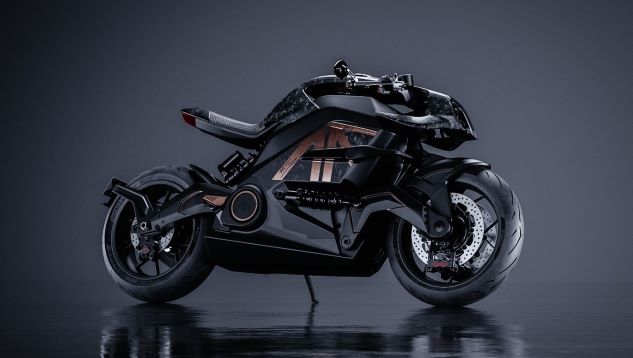They’re bringing the competition to your store
 It would be absurd to allow a competing dealer to open a kiosk in the middle of your store, or to place their fliers next to the price tags on your new units. Bringing the competition into your store wouldn’t make sense, yet thanks to smartphone users, it’s happening routinely.
It would be absurd to allow a competing dealer to open a kiosk in the middle of your store, or to place their fliers next to the price tags on your new units. Bringing the competition into your store wouldn’t make sense, yet thanks to smartphone users, it’s happening routinely.
This increasingly larger group of shoppers are using these devices to compare prices inside your dealership with your competition, among other on-hand retail tasks. But this challenging technology trend also is providing some new sale opportunities, according to data from U.S. consumer surveys.
Nearly half of the 200 dealers surveyed recently by Powersports Business said they have seen customers in their dealership price shopping with smartphones.
The trend many dealers are seeing is not surprising, considering seemingly every text-crazy teenager, e-mail-centric executive and everyone in between has the newer cell phones, which have Internet capabilities as well as the ability to download applications, often called apps, that perform a variety of tasks.
In fact, more than 40 percent of American adults are using cell phones to surf the Web, read e-mail or use instant messaging, according to a Pew Research Center study of 2,200-plus adults ages 18 and older.
And many are using those smartphones to price shop or to take advantage of deals given by retailers. In a global survey by research company Accenture, 56 percent of respondents said smartphones make their shopping experience more enjoyable. That study polled 1,000 smartphone users from 10 countries, including the United States.
What often makes it “enjoyable” is price shopping and the negotiations that follow. Compete, a media company, found 28 percent of American smartphone users have downloaded a barcode scanning app in its study of 914 smartphone owners that was released in January.
“I do think they’re going to become more and more relevant,” Danielle Nohe, director of the technology and entertainment group at Compete, said of smartphones.
While many shoppers are seeking competitive information through the basic Internet functions of their phones, others are using apps that provide more detail about products by scanning UPC barcodes, which can garner data ranging from specifications to reviews to nearby retailers with the lowest prices.
“They’re able to really quickly scan the product and pull up pricing information,” Nohe explained.
When barcode scanning,a customer typically appears to be taking a photo with the smartphone. The apps that decipher the codes are usually free, and some come preloaded on phones.
Some of the most commonly scanned items, such as groceries, are not found in powersports dealerships. However, 11 percent of users polled by Compete said they scan codes on apparel, shoes, jewelry and accessories, and another 18 percent said they scan “other” items, not specifying what those product were. Which details they’re looking for may not surprise retailers dealing with post-recession customers.
“When we ask people why did they scan, the top reason, far and away from any other reason, is to price shop,” Nohe reported.
In her company’s survey, 54 percent of people said they scanned barcodes to compare prices, 23 percent looked for additional product information, 13 percent wanted to buy the product online from their phones and 11 percent said they had other intentions.
However, technology doesn’t always trump the store. Compete’s survey found 47 percent of smartphone price shoppers still purchased the item from the store they scanned it at, while 36 percent decided not to buy the product at all, 12 percent went to a different store and 0 percent purchased through the phone.
“How I look at it: It’s really making for a more informed consumer,” Nohe said.
Though customers have more information, many still prefer interacting with store personnel. Accenture’s survey found 54 percent of smartphone users prefer retail staff for advice on appropriate apparel items and 68 percent would like to talk to an employee when resolving a billing dispute. Half of those polled would like to use their smartphones to communicate directly with particular in-store employees, and 58 percent would regret losing the personal touch given by store staff if they relied on their smartphones.
For those customers who are relying on their smartphones, which Nohe said are primarily males ages 18-34, dealers have options for maximizing their technological impact.
One way is through coupons that can be offered periodically through text messages or as customers walk or drive by the store. Seventy-nine percent of consumers with smartphones find it useful to download a money-off coupon onto their device, and 73 percent are interested in money-off coupons distributed as they pass by a store, according to Accenture. Also, 57 percent said they would shop more frequently at stores that are up to date in their use of smartphones.
One way to target these customers is to use QR or 2D codes. They resemble a barcode, but are square and can provide any information the creator wishes. For example, Best Buy uses them in-store to give customers more detail on product. Nohe suggests dealers offer product specs, videos and positive reviews of their products if they use QR codes.
“(It’s) really making it more of an interactive experience for the consumer and showing them more than they can get off the shelf,” she said.
QR code generators are available online, and services come in a variety of prices. Once a code is created, it can appear in many places, such as in brochures, on fliers, in e-mails or on a product’s tag.
“This is another avenue to really make a touch point with the consumer, show them a video, show them someone talking about the product,” Nohe explained.
Though smartphones can be daunting, knowing what opportunities exist can prepare a dealer for how technology is changing retail business. The phones can be seen as inviting competition into the store, but it can also be viewed as an opportunity for more sales, something nearly half of the Powersports Business dealer survey respondents believe. PSB
For more information on Compete’s survey, visit www.compete.com or e-mail dnohe@compete.com. Accenture’s survey can be found at www.accenture.com.








